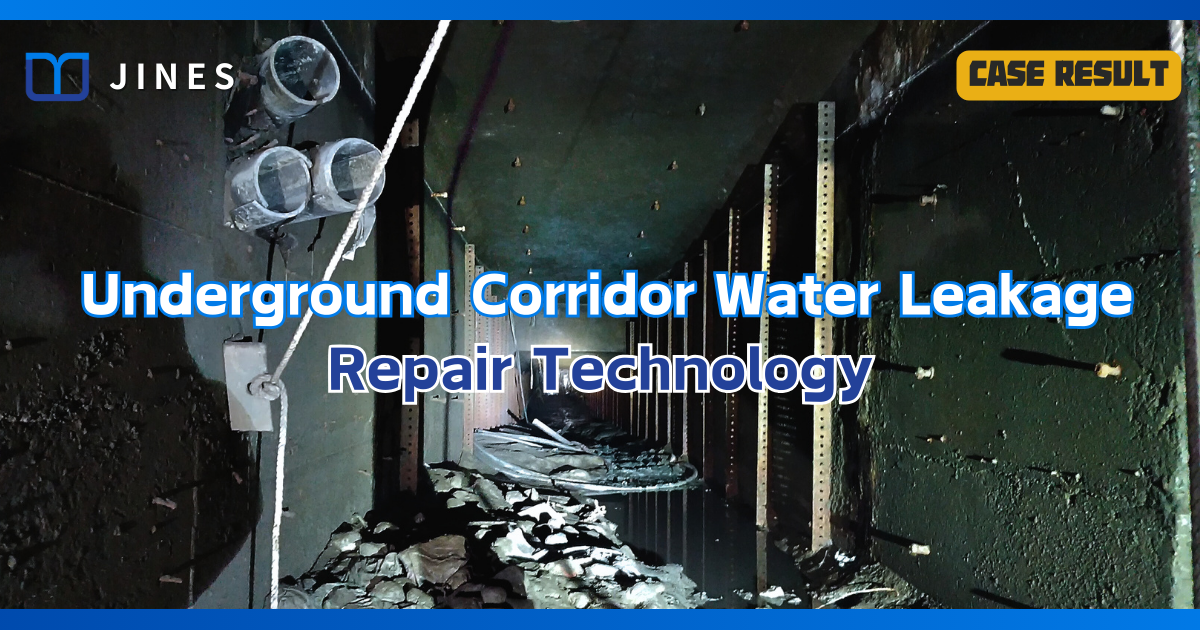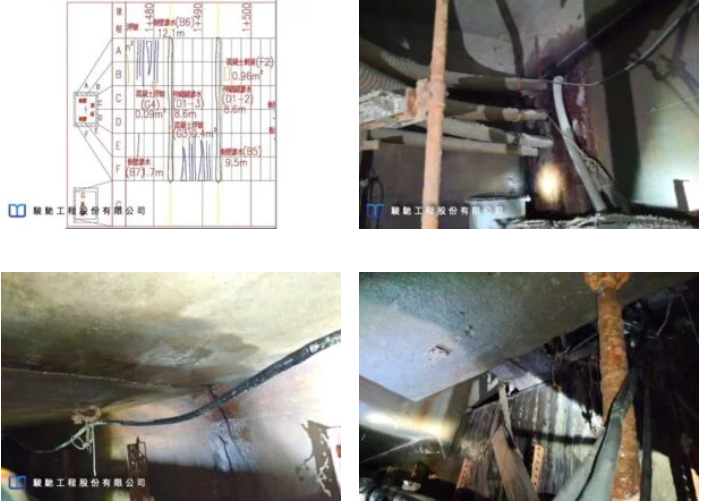
UNDERGROUND CORRIDOR WATER LEAKAGE REPAIR TECHNOLOGY
Long-term effective repair method for water leakage in underground in-use corridor
―
1. Project Background
In modern urban areas, numerous civil infrastructure distribution pipelines, such as electricity, tap water, gas, telecommunications, etc., are often concentrated within dedicated conduits or shared channels.
Instances of water leakage in these conduits can lead to corrosion and damage to pipeline components and equipment room fittings, thereby increasing maintenance costs. In the event of collapse or leakage accompanied by soil infiltration, there is a significant risk of subsurface voids and ground subsidence.
In a particular underground corridor, after a period of use, a severe water leakage issue emerged. Upon inspection by the maintenance authority, multiple instances of water seepage and corrosion of steel reinforcements were discovered within the corridor.
In some sections, even the occurrence of deformation, cracking of the roof, and shear cracks on the sidewalls posed a significant threat to the corridor’s functionality and public safety.
After careful assessment, the overseeing authority decided to commission a professional firm with relevant repair experience to undertake structural sealing, rust removal from steel reinforcements, and structural reinforcement work.

―
2. Solution
The underground corridor water seepage situation was complex, with occurrences often distributed at locations such as wall penetrations, external pipeline interfaces, shear cracks, secondary construction joints, discontinuities, construction defects, subsidence or earthquake-induced fractures, and around manholes.
To achieve a long-term solution for underground corridor water seepage issues, contractors implemented a four-step solution development process:
(1) Seepage condition assessment,
(2) Structural deficiency categorization,
(3) Construction technique planning, and
(4) Selection of grouting and repair materials. The primary objectives of this approach were to avoid damage to in-service pipelines, prevent construction-related accidents, effectively seal and reinforce, and ensure long-term bonding between grouting materials and structural components.

―
3. Works Design
diagonal borehole grouting techniques: general crack central injection, pressure-water crack ratio injection, and continuous seepage near-water surface intrusion injection. These methods were to be complemented with flexible grouting materials, rigid grouting materials, and quick-setting grouting materials.
They were to be applied in combination based on on-site conditions. Once the water seepage issues were resolved, rust inhibitors for steel reinforcement to be used, followed by surface structural repair using special epoxy resins, composite resin mortars, and tensile fiber patches.

―
4. Works Process
Due to the presence of localized water accumulation and sludge within the corridor, and to ensure the proper functioning of various pipelines, the construction process followed a step-by-step approach, including temporary support in hazardous areas, environmental cleaning, borehole grouting for sealing, rust prevention for steel reinforcements, structural repair, surface restoration, component replacement, and environmental restoration.
Given the limited space and dense network of pipelines within the corridor, construction was primarily carried out using small-scale construction machinery in combination with manual labor for handling.

―
5. Results
This project involved the management of water seepage and structural repair within an in-use underground corridor.
Although it did not pose an immediate threat, it carried the potential for sudden public safety concerns and disruptions to utility services.
Through a meticulously planned remediation process, proper grouting and repair techniques, and the use of high-quality materials, the seepage issue within the corridor was completely eliminated.
Following the replacement of corroded components and protective coatings, the underground corridor had been restored to safe operational conditions, successfully achieving the goals of repairing and reinforcing the in-use underground corridor against water seepage.

―
・More Construction Result Sharing
Contact us:+886 2769-2355